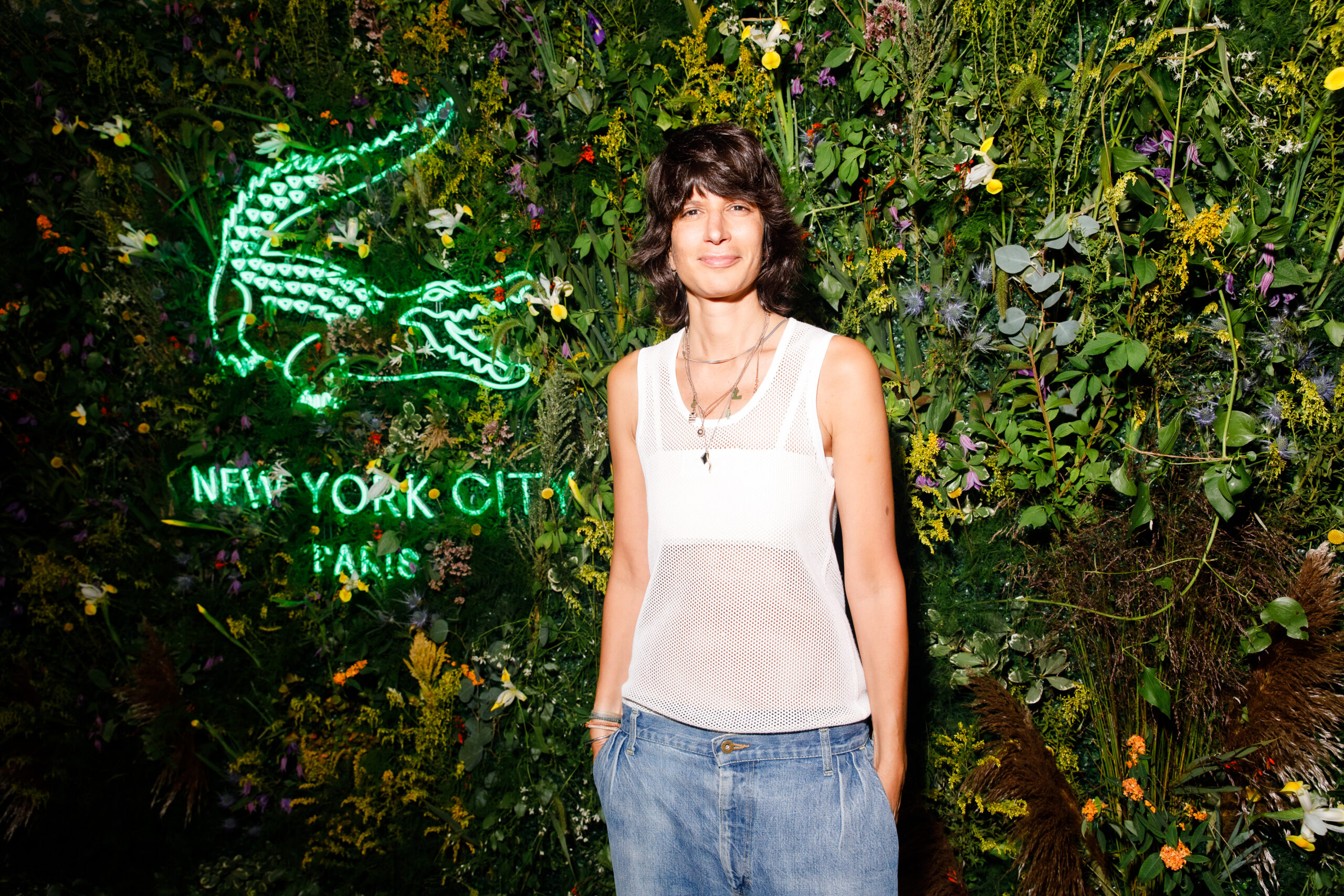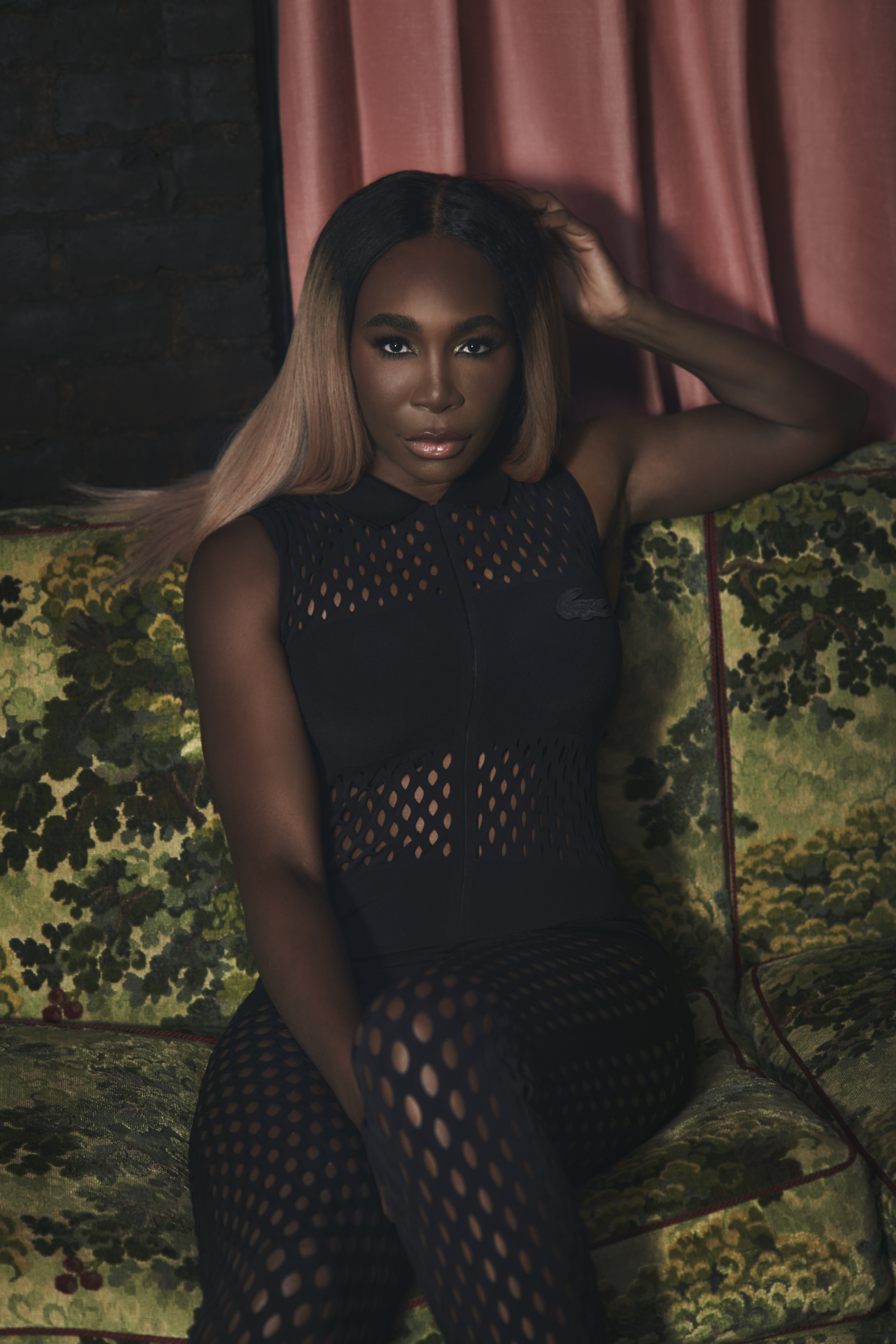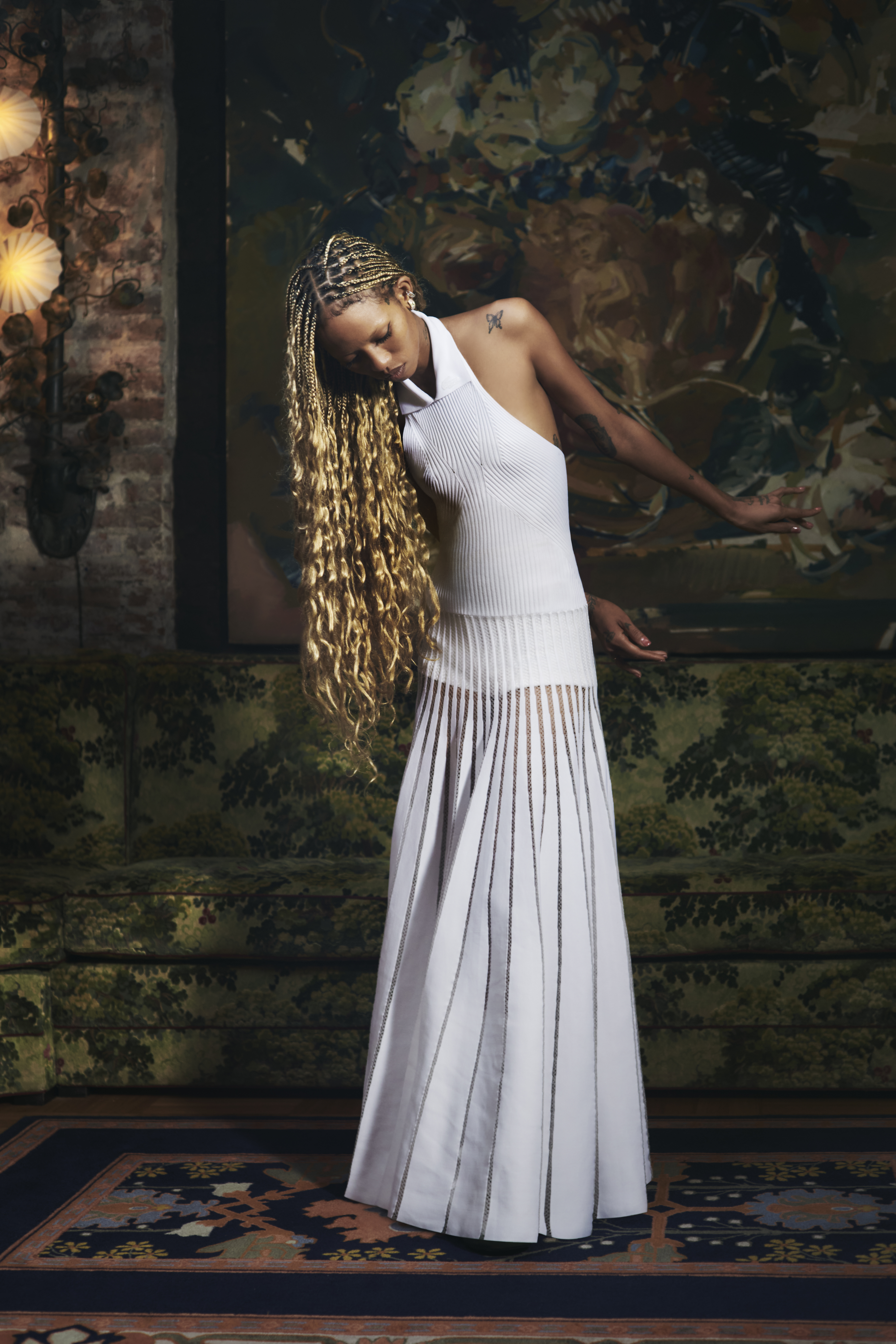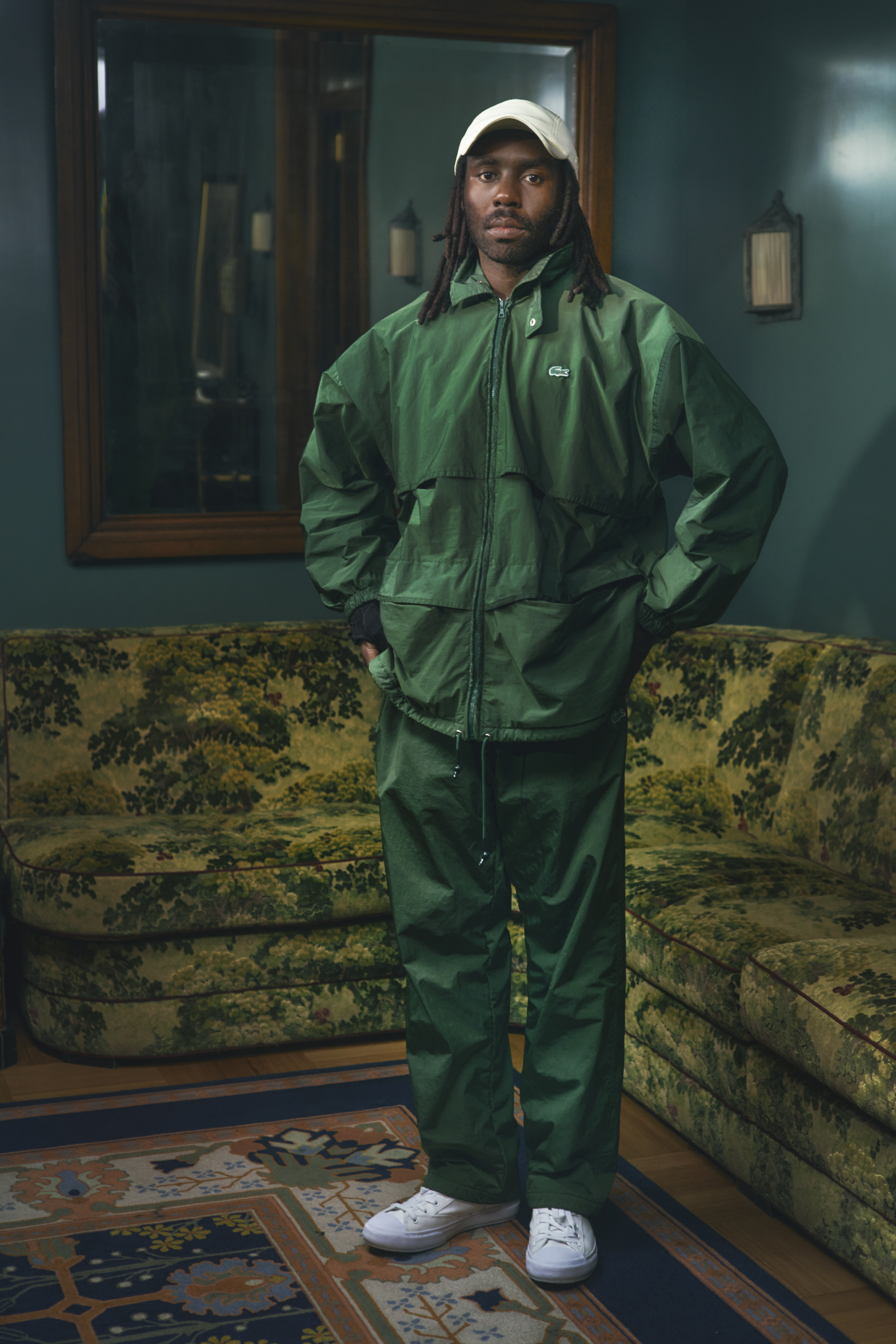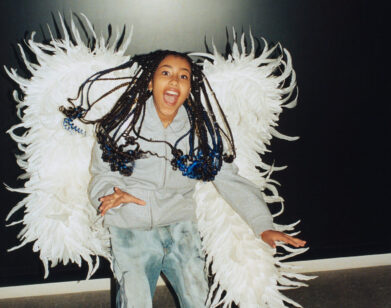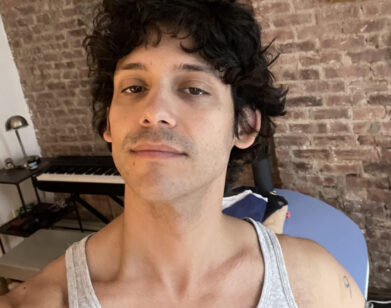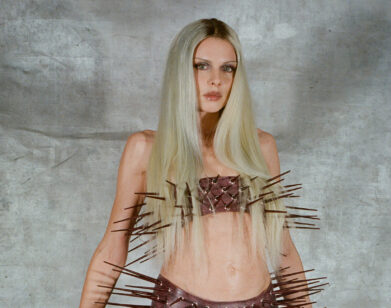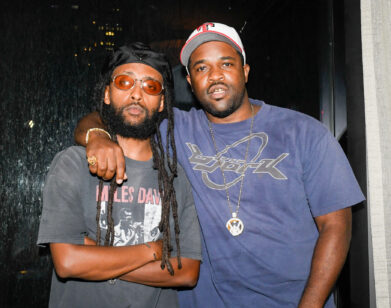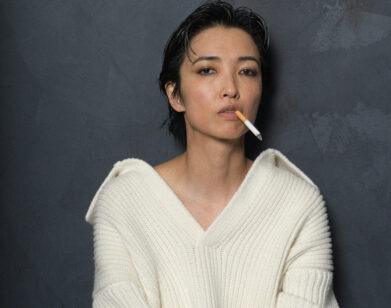DESIGNER
Lacoste’s Pelagia Kolotouros on Venus,The Matrix, and Her Theory of Crocodiles
Pelagia Kolotouros first remembers encountering the crocodile as a little kid growing up in Queens, when she’d pass the nearby elementary school and see her neighbors, outfitted in Lacoste, playing tennis on a dilapidated court. “At that age,” she told me earlier this week, “things are just imprinted on you,” things like the very particular smell of a New York City summer, or the sounds of old, perennially recycled tennis balls being thwacked outside her window. Call it a full circle moment, then, that earlier this year Kolotouros was appointed Lacoste’s creative design director, where she’ll bring her vision and expertise from past stints at Theory, Ivy Park, The North Face and Yeezy to a house that embodies the spirit of sporty, French refinement.
The first sign of the designer’s tenure came last week, when Lacoste continued its 90-year anniversary celebrations in Kolotouros’s New York, where the brand unveiled its new designer’s first collection. Later that evening, on the rooftop of Nine Orchard, the festivities continued with Venus Williams, Adesuwa, and Dev Hynes, a trio Kolotouros considers “a good representation of what we want to put in the front row as we go forward.” Once she arrived back in Paris, Kolotouros gave us a call to discuss her theory of crocodiles, what she learned from Kanye West, and how taking the reins of a 90-year-old brand is a lot like being an archaeologist.
———
PELAGIA KOLOTOUROS: Testing, 1-2-3.
JAKE NEVINS: Hey there! How was your fashion week?
KOLOTOUROS: Oh my god, it was amazing. It was really great. Were you able to come to the party?
NEVINS: Sadly I was not. I was at a friend’s wedding.
KOLOTOUROS: Jake. No, it was amazing. And it was great because I got to bond with the team. It was our first big event. So any opportunity that brings a team together is always a great kind of accomplishment. So I think team-wise, we all bonded and we all got everything that we wanted out of the event. It was tricky, because we had two events in one day. We had the one in the Bronx, too. So it was a lot of juggling different ambitions. And that could be very stressful. But when you have a team like this, it wasn’t.
NEVINS: You had quite a turnout on Saturday. Did anyone leave you starstruck?
KOLOTOUROS: All of them. I mean, from Adesuwa to Irina to Venus, they’re all amazing. And what was great about the collection of people that we had was a good representation of what we want to put in the front row as we go forward. It is definitely an agenda of mine to bring in more art into the brand. And everybody had a purpose that contributed to the vision of Lacoste. So Adesuwa, with her interesting take on recycling. She was wearing these grass platform sandals that she made five years ago from recycled plastic grass. And then of course, Venus. She is kind of my big muse for Lacoste, because she really does encompass a lot of the brand’s values. It’s a mashup of performance and this freedom of sensuality and body and fashion. She’s just a mix of all those elements in one human body. She’s the nicest person ever. She’s incredibly humble and she’s the kind of person that will ask you, “Hey, how’s your day?” “Hey, how’s your French coming?” And then Dev [Hynes] is like, wicked cool. I found out that he is crazy about tennis and crazy about Lacoste.
NEVINS: He actually plays at the same courts I do in Fort Greene.
KOLOTOUROS: Well, maybe we can play tennis together because I’m supposed to play tennis with him too.
NEVINS: Oh, is that right?
KOLOTOUROS: Even with his broken wrist. So I think I can beat him because he has a broken wrist.
NEVINS: Let me know who wins.
KOLOTOUROS: I’m not shy. I’ll let you know the truth.
NEVINS: You were appointed creative design director earlier this year. You’ve come on board a brand with a 90-year history, so there’s a legacy that precedes you. I’m curious if you feel any kind of pressure, and how you reconcile your own sensibilities with those of the brand.
KOLOTOUROS: I don’t feel a lot of pressure because the brand has such a rich history. It’s not like coming into a new brand that’s starting to build its DNA, and I’ve been in those kinds of situations before. But with Lacoste, because it has such a strong brand DNA, it’s really about being an archeologist, or a historian to some degree, and going back to the archives, and looking at the pieces with a new perspective, with a new eye, with a 21st Century eye, and then reflecting on what’s going on in the industry, and trying to merge those two. We have a place, it’s like an hour away from headquarters, and it’s an archive that houses 90 years of Lacoste’s history. You know in The Matrix, the Keymaker?
NEVINS: Yes! Of course.
KOLOTOUROS: It was like the Oracle and the Keymaker. So I feel like if I’m ever nervous or confused about what the next collection should look like, or what the vision of the brand is, all the answers are just there. And I found the same thing when I was working at The North Face. There’s so much richness within these brands that have been around for so long that it’s more about seeing it with new eyes and viewing it like a channel, like a conduit.
NEVINS: That sounds kind of thrilling. It makes me wonder if you had any formative encounters with the brand throughout your life. What’s your first memory of Lacoste?
KOLOTOUROS: Oh, for sure. I grew up in Queens around an elementary school. That was my backyard. And it was one of those real New York City elementary schools, all concrete grounds, people go and play basketball. And there was an old, kind of battered tennis court. I remember people playing tennis and I think that’s the first time I saw the crocodile.
NEVINS: There you go.
KOLOTOUROS: At that age, things are just more imprinted in you, so you have this emotional kind of connection. It brings back smells of New York City in the summertime and breaking a hydrant to cool off. People playing tennis on an old tennis court and recycling the tennis balls because you don’t want to buy new ones. That also brings me back to my creative vision to some degree. I want Lacoste to be more diverse, to reach a larger audience.
NEVINS: On the topics of Queens, obviously Novak Djokovic just won the U.S. Open wearing Lacoste.
KOLOTOUROS: It’s amazing. It’s symbolic to some degree, because when you think about Lacoste and its resilience, it’s been around for 90 years. You can kind of philosophize: The crocodile has been around for 120 million years, it’s a prehistoric animal. It’s been around for 120 million years. Djokovic, with his stamina, has been able to kill it at this age. So it’s inspiring to see somebody as resilient as the crocodile. I know it sounds a little cheesy, but him being in the game for all these years, and having that kind of deep sense of focus and stamina. His focus is just like razor sharp.
NEVINS: It’s astonishing. He’s so dialed in, especially when he needs to be.
KOLOTOUROS: He gives it his all.
NEVINS: Can you give me three words to describe a crocodile?
KOLOTOUROS: Timeless, that’s a big thing for me. And cross-generational, ferocious, and playful. I love the paradox between ferocious and playful. I am always obsessed with taking opposites and bringing them together. I think I kind of learned that from Kanye, taking things that are completely opposite and then just mashing them up and trying to make sense out of them. He would always tell me these things like, “What if this and this happened?” And I was always like, “Oh my god, I’ve never thought about that before.” So when I think about the crocodile, it’s playfulness, but it’s ferocious. How do you bring those two aesthetics together, whether it’s a collection or an illustration of the crocodile or the feeling of an ad campaign? And what I love about Lacoste is that it crosses all these generations. A 20-year old can wear it and a 70-year old can wear it, and it looks completely different on both people. But it’s relatable to both traditions.
NEVINS: That’s well-put. You mentioned Kanye, and you’ve also worked with Pharrell and Ivy Park. So I wanted to ask how, if at all, hip hop infiltrates your vision, and if it’ll continue to do so at Lacoste.
KOLOTOUROS: Absolutely. What’s great about being in the industry for a long time and having all these different experiences is that you just roll it up into one aesthetic at some point. You sample the best moments from each brand and then you remix it into your own vision. Kanye definitely taught me how to think differently and how to approach fashion in a different way. I was first taught at Calvin [Klein], where the design process is very traditional. And with Ivy Park, it was all about really celebrating the body and being proud of it in all shapes and sizes, which really gave me an appreciation for the female form. At Calvin, it’s very androgynous. Calvin sexy is different from Beyonce sexy. So it was great being exposed to all those different types of femininity and then trying to roll it up into one cohesive point of view. So bringing in a little bit of that modernity that Calvin’s known for, taking streetwear and elevating it, bringing a sense of sensuality into the women’s collection. You’ll definitely see things elevated, a lot more like sheer, more of this French elegance that’s kind of not tangible, but it’s going to be present in the collection. Polarization, French elegance, performance.
NEVINS: Mash them together. Thank you very much for taking the time. And congratulations on this appointment.
KOLOTOUROS: Thank you so much, Jake.

